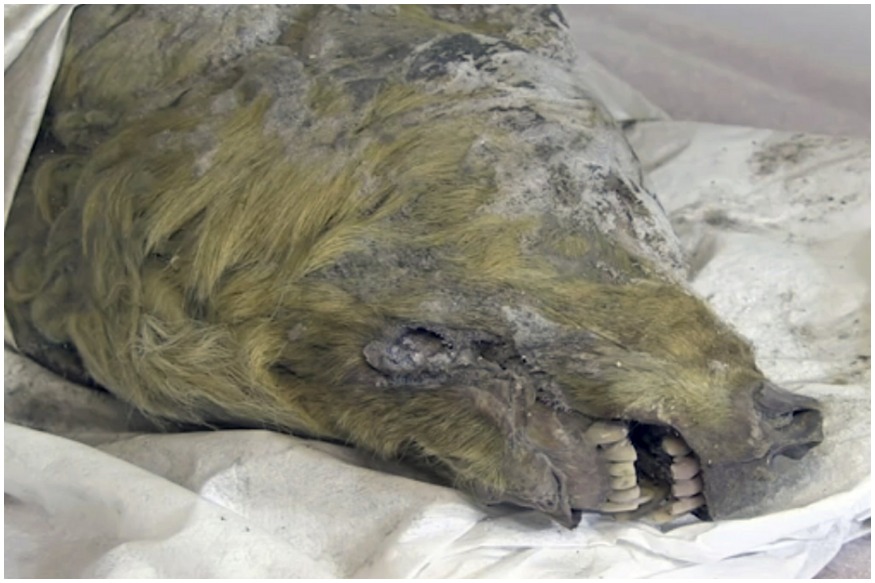40,000-Year-Old Wolf's Head Preserved by Permafrost Found in Siberia

A 40,000-year-old wolf's head was discovered in northern Russia — with its ears, fangs, brain and tongue perfectly intact in the permafrost. Scientists believe the beast from the Ice Age belonged to a now-extinct subspecies of wolf that lived during the same era as mammoths.

The furry head of the wolf was found in the Russian Arctic region of Yakutia last summer, according to a Russian newspaper, The Siberian Times. The wolf's head is about 40 centimeters (almost 16 inches) long, and the wolf was estimated to be between the ages of 2 and 4 when it died.
"This is a unique discovery of the first ever remains of a fully grown Pleistocene wolf with its tissue preserved," Albert Protopopov, a top researcher at the Russian Academy of Sciences, told the newspaper.
"We will be comparing it to modern-day wolves to understand how the species has evolved and to reconstruct its appearance," he added.
The Associated Press reported scientists said the Ice Age wolf was about 25% bigger than today's wolves. Experts at the Swedish Museum of Natural History will further examine its DNA, according to The Siberian Times.
The discovery was announced at the opening of a woolly mammoth exhibit at the National Museum of Emerging Science and Innovation in Tokyo.
Source: www.cbsnews.com








